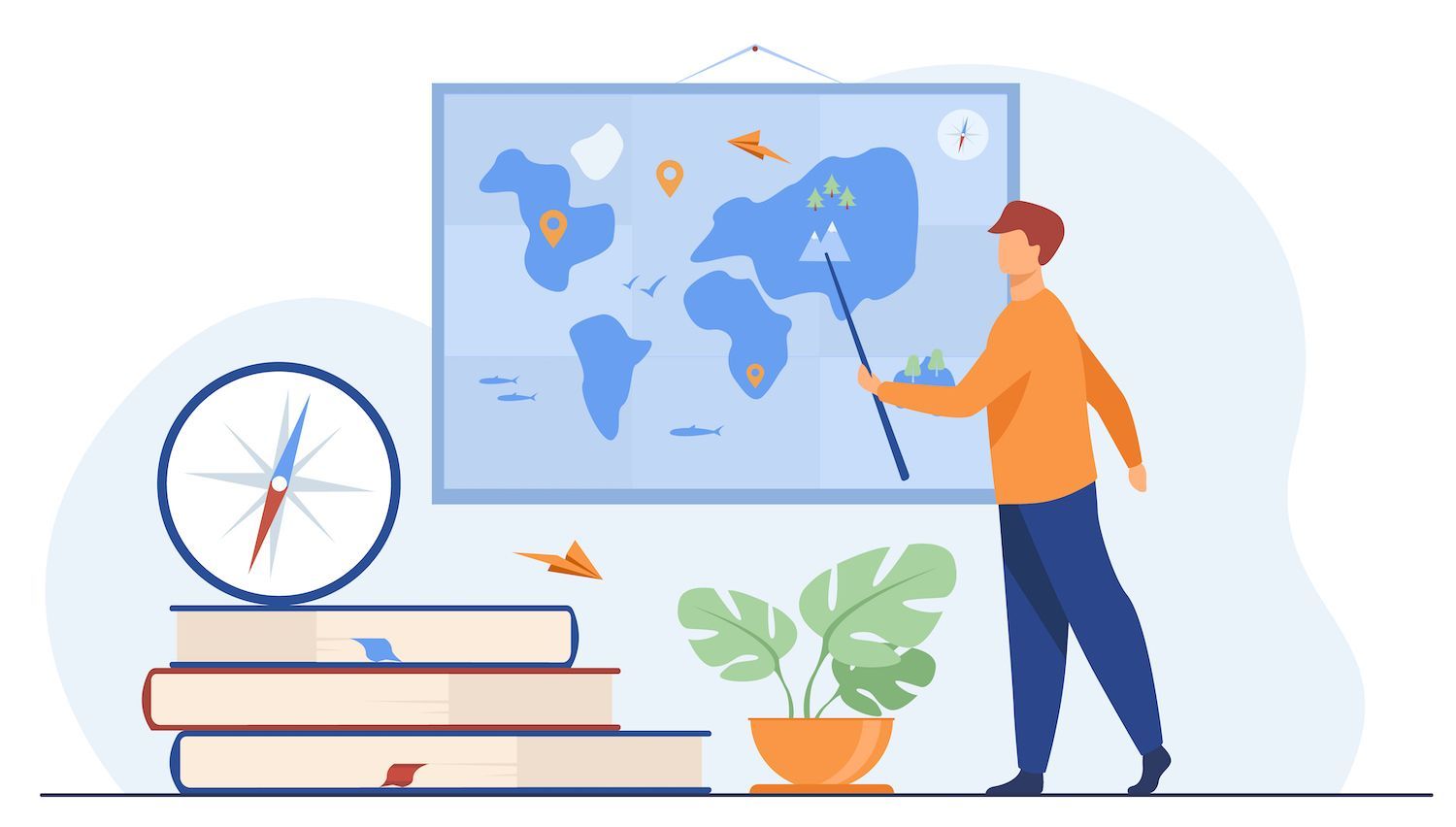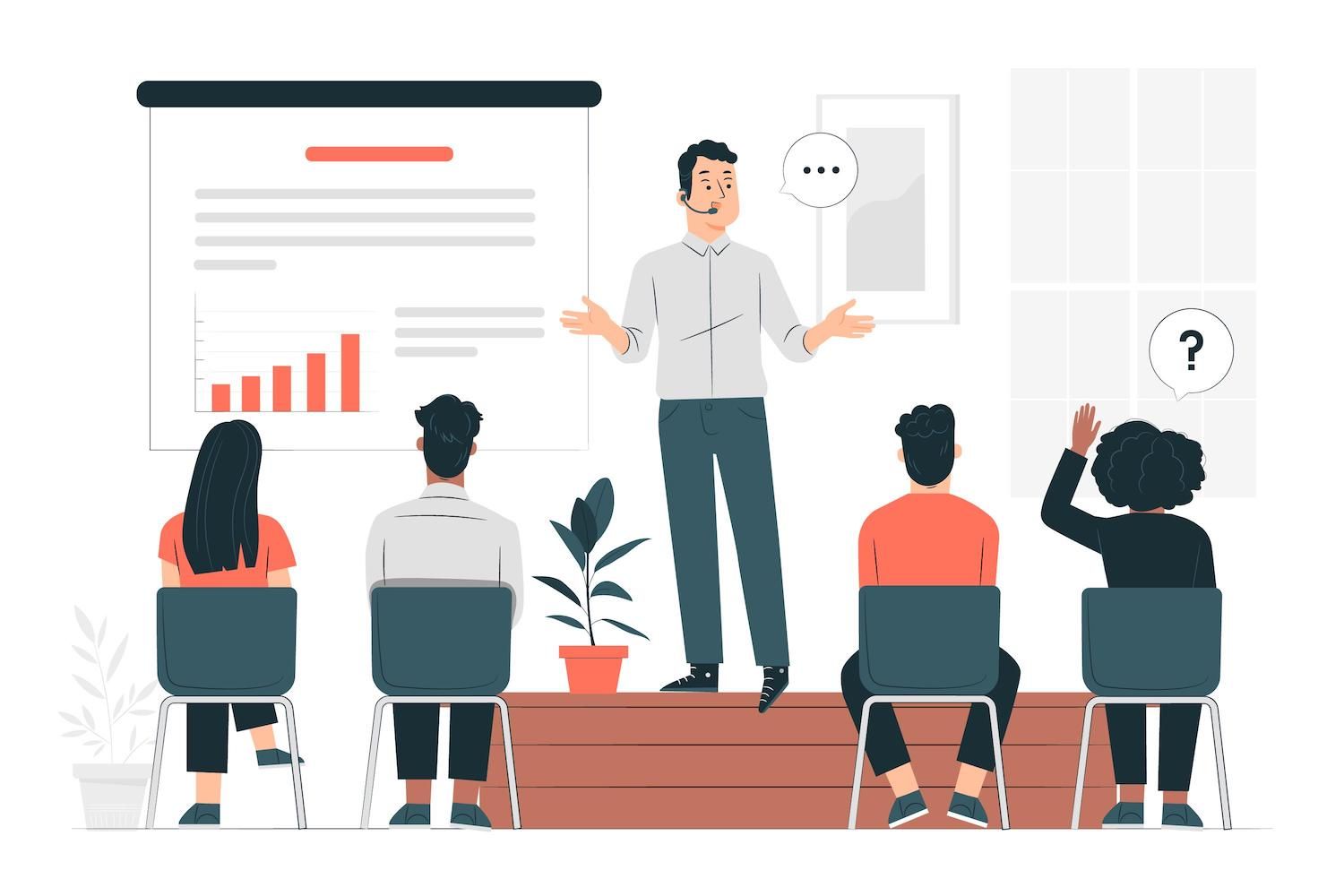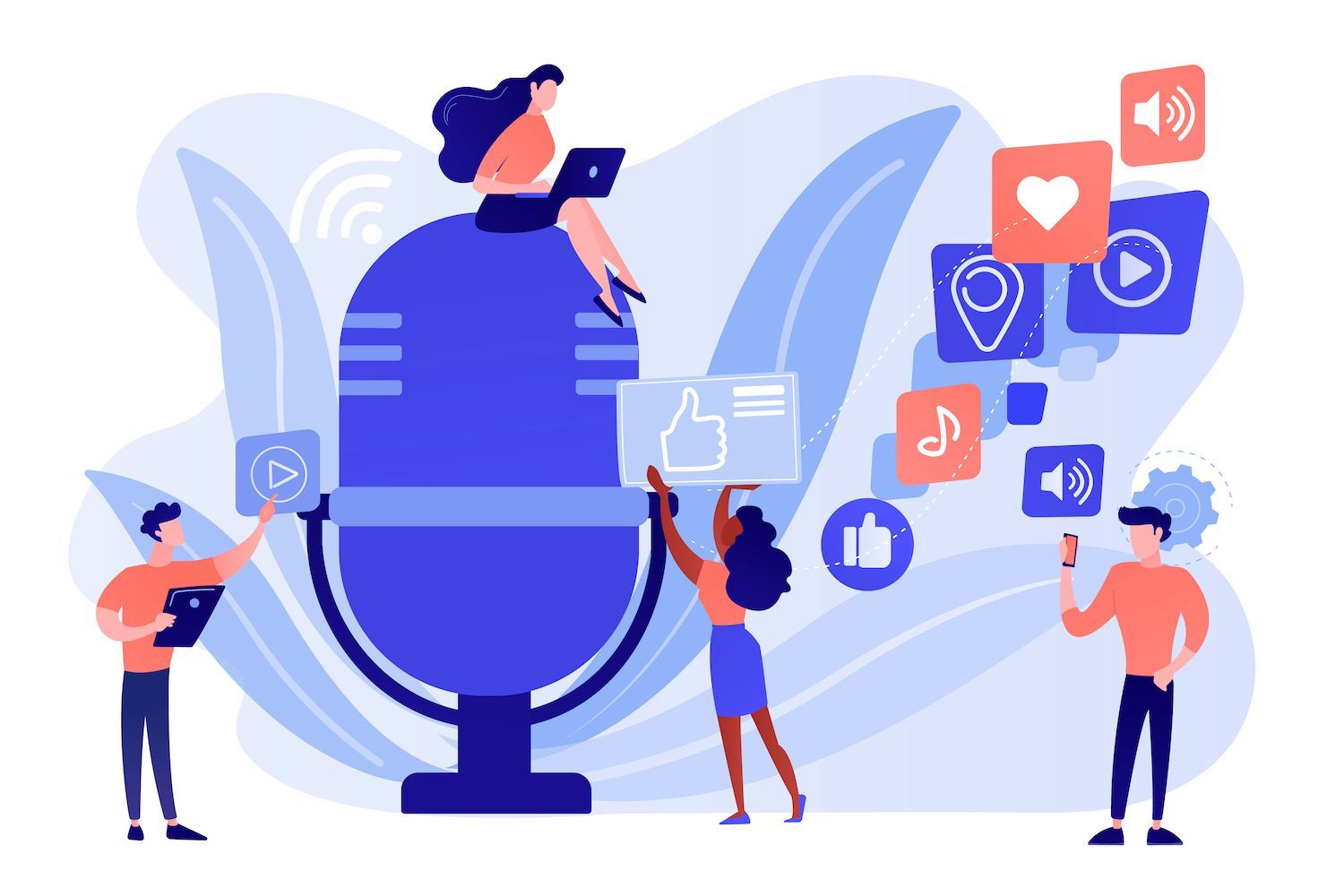How to Expand Your Online Store with Omnichannel Marketing
Omnichannel marketing (also known as cross-channel marketing) is focused on providing an identical, seamless personal customer experience across multiple channels, which includes the in-store customer experience for brick and mortar stores.
With an omnichannel marketing approach You can place adverts in front of people who are interested in products related to the desires of customers and past purchase history, as well as reduce business to business selling processes. Making sure that potential buyers get relevant products and services can increase the chances of conversion and improves the effectiveness of advertising funds.
What is the difference between omnichannel and multichannel marketing?
There's a good chance you're already using several channels in your marketing plan. If you're still relying on one channel, your initial step is to implement more channels.
Multichannel marketing differs from an omnichannel model by the way that your channels integrate and collaborate to provide the same seamless and consistent experience regardless of where a person is in the buyer's journey.
When you are using multichannel marketing, each channel may be functioning independently from one another. There could be a distinct marketing team to oversee each channel. Then, you analyze the ROIs of each channel individually. These campaigns may be disjointed campaigns each with their different customer journeys. The customer can engage in all of these channels and be treated as when it were the very first time that they've ever interacted with your company.
However, Omnichannel marketing is the integration and blending of your marketing strategies across various channels. This will result in improved customer service.
If you have a successful omnichannel approach one can expect that a person who starts the purchase process via an PPC advertisement but does not buy anything after visiting your online store, is likely to engage through different channels, based on their initial level of engagement, and can expect to have a smooth and consistent shopping customer experience.

It could be as simple as seeing the display ads or on social media which are pertinent to a first-time buyer, notification when they come back to your website, personalized ads in videos, or even store promotions that appeal to a buyer.
We've all seen instances of omnichannel marketing the form of.
If you do decide to take a look at the media advert, you can sign up to receive coupons on the website of the merchant through an ad. If you don't buy the item and you don't, you may get an email from the abandoned cart that includes a coupon or discount, or you may continue to see advertisements for similar products across other internet-based channels.
If you decide to make a purchase it's likely that you'll receive an email with recommendations on products that are similar along with future sale announcements. You can also receive catalogues and postcards that include an offer to visit the store in order to make a purchase if the store has brick and mortar locations.
Omnichannel is a way to experience. It can involve a mixture of offline and online marketing, as well as various interactions.
Do you think it's complicated? It's not! It's a good thing that you don't have to invest a lot of budget or employ a huge group to create a simple, yet effective strategy for marketing across multiple channels to your company.
Omnichannel marketing offers many advantages both for businesses and customers
An omnichannel strategy for marketing is a great alternative to multichannel marketing for your company and also your clients. The most significant advantages are:
It's also more economical.
Businesses will gain of Omnichannel marketing can save money since it's more effective. Instead of making separate marketing campaigns for email, social media, direct mail and PPC, you can create one campaign you can use it on each of your offline and online channels.
More than mere campaign, you'll be employing automated marketing that reacts to the way that current and potential customers interact with your campaign.
Instead of creating new campaigns the model of omnichannels aims to develop a variety of offers based on the particular circumstance.
Imagine that two buyers have both been exposed to the same ad. One buys after which your marketing automation gives the purchaser a discount one-time purchase offer to the goal of making them a repeat purchaser.
The other person doesn't buy however their behaviour suggests they're awed. You will receive messages from the marketing department that attempt to convince them to return and make the purchase.
It's easy to set up the omnichannel marketing tools once after which your automated program will use the tools based on where a person is at in their buyer journey. The setup takes work and once the system is running using an omnichannel plan, it's a huge time-saver.
It leads to better customer experience
If a client feels like they are recognized and isn't an unknown person Your marketing automation software will be able to identify the place they are within the buyer's journey. Omnichannel experiences are better and efficient. Additionally, is in line with the expectations of consumers.
This saves time for customers, helps them make quicker choices, as well as reduce confusion.

It allows you to provide better customer service.
If customers require assistance via phone, omnichannel solutions allow your customer support team to gather more information on each person so they don't have to talk to the same person as everyone else. They will be able to get speedier, and not spend the time of starting at the beginning. They will also be more effective and meaningful conversations.
What are the steps you can take to design an omnichannel marketing strategy?
This is a step-by-step approach for creating an omnichannel marketing strategy which won't cost you nothing.
Connect one channel at the moment
It's impossible to begin with everything at all at once, but thankfully there's no reason to. Omnichannel marketing refers to the practice to reach the audience that you'd like to connect with through a single message across multiple channels.

Start with the most popular channel. Then, identify the initial channel that you would like to integrate with. If you choose to include more channels, you should consider investing in the automation tools that for helping your CRM software (CRM) software communicate with your offline and online channels, such as a brick-and-mortar shop.
You must ensure that you're focusing your advertising messages to the right audience.
The ability to target your advertising at segments that are likely to purchase your product is an important part of developing a successful Omnichannel Marketing strategy.
Marketing must be the first priority throughout the entire journey of the consumer
The customer journey begins at the point that a prospective customer is first introduced to your company and culminates in an ongoing relationship with you. Below are the five stages of the customer's life cycle and the various ways to reach consumers at each of them by using an omnichannel method of marketing.

1. Reach
The customer might be looking for a specific item or a solution to a problem. It is the ideal chance to let the customer conscious of your brand. Customers might be looking at reviews of products they are buying, looking through reviews or searching to find out more information about whether a particular suitable item is a suitable match for the individual that they're looking for.
2. Acquisition
The process occurs when a user visit your website, sign up to get your newsletter, engages through your chatbots or contact your business by phone or email or goes to the offline location of your store. Although the customer isn't buying anything, they're checking the business's website, and is collecting information.
In the phase of acquisition at the time of acquisition you can continue collecting customer data so that you can provide an omnichannel service to each segment of your group of customers.

3. Conversion
If someone purchases something online or making purchases at stores, they've "converted" to being your customers. An omnichannel customer experience will ensure that they are acknowledged and appreciated. It can involve emails or push notifications. It is also possible to offer chances to shop in the store if you have an actual shop.
4. Retention
Alongside delivering a higher ROI, but cultivating loyal customers will help build brand loyalty -- and the ones who remain loyal customers are the most loyal customers through their testimonials and telling friends and family about your products.
At this point in the process of becoming a client, it's crucial to utilize the ever-growing data about your customers to enhance your conversion procedure. Your marketing efforts could include contacting your clients via email follow-up emails with additional product suggestions or discounts that are relevant to their shopping history, send them a request to review your product or conduct a feedback survey, offer customer loyalty programs, and provide excellent customer service.
5. Loyalty
Customer satisfaction leads to customer loyalty. You can't simply leave it to the side and then forget about it.

Learn which channels that allow advertising will be the most appropriate to implement your omnichannel strategy
If you're working with limited resources, it's possible to select carefully the channels to focus on as you build your multichannel marketing strategy. Select low-cost advertising methods first and then move on to higher-cost advertising channels when your budget grows.
It's the aim to establish multiple touchpoints through various channels in order to offer a consistent customer experience.
Marketing strategies that are low-cost include:
Organic search
Make use of the information you get via Google Analytics and other marketing tools to increase the efficiency in your marketing multichannel strategies.

Google Shopping

Email marketing

Through services such as MailPoet that you could use to design a welcome set of emails to new subscribers, suggestions to purchase products on the basis of a the previous purchase, email messages about abandoned carts, emails to those who left items in their cart, sales announcements, and other multichannel marketing strategies.
Rewards program

Customers can get an all-channel marketing strategy that is specifically tailored to their needs regardless of different platforms and on multiple platforms. Imagine a rewards member seeing ads on the display screen that show the user how many points they've got and offers suggestions on what they could do with these points. That's an example of an omnichannel experience.
Customer service
Each interaction with customers presents an opportunity to market. Instead of thinking of customer service as merely a way to manage problems and issues, consider it the chance to create an army of customers who are loyal to you.
With an omnichannel marketing approach your customer service team can track an individual customer's past engagements and transactions, as well as past interactions with staff. When you use the full advantages of this, you can provide customers an unparalleled experience, regardless of the customer's preferred means of contact are be it SMS, chatbots telephone, email or within bricks and mortar locations.

The use of a customer relations management (CRM) tool such as Jetpack CRM helps make the process of customer service simple and smooth. Create your own support portal, on top of the status of your tickets and more, right from your shop. It's not necessary to log in to an external CRM system to manage your customers. The ability to do this is all available from the WordPress administrator area.
Organic social media
It's difficult to draw interest from organic sources within social media, especially when there are multiple voices to compete. However, there are a handful of excellent options to use for marketing that is free that are extremely effective. You can:
- Make your own Facebook Group for your business
- Engage and post frequently across your social media outlets
- Make an AMA post on Reddit making use of reddit's "Ask Me Anything subreddit
Methods of marketing which cost more include:
Paid-for search
If you're looking to get your site to rank up above the natural result pages, or to get instant traffic as you work to improve your SEO on your site Paid search advertisements are the alternative. You should also ensure that your landing page is mobile-friendly, loads quickly and accurately reflects the contents of your ad's content.
Tools for remarketing and paid search can be a valuable source of data about your customers that you could use to implement your omnichannel marketing strategy.
Paid Google Shopping

Advertisements to show
Advertisements on social media
Marketing to people who are active on social media is effective method of attracting new clients because they will immediately share your advertisements with their social circle. You can market by demographic data, perceived needs, desires, or interests using the emails to generate a similar audience with similar profiles as your current customer base. You can also develop an omnichannel plan for advertising on social media after you integrate these channels into your CRM.

Facebook lets you connect the catalog of your shop's products to Facebook and Instagram in order to provide a consistent experience for customers. In addition, you are able to buy ads directly through your dashboard.
Video ads
With the advent of online platforms such as YouTube and more affordable tools for editing and video production software, video marketing doesn't necessarily mean that it's out of the reach of small-sized businesses.
If you are planning to use videos as a part of an omnichannel advertising strategy, make sure that you create videos that are able to be used on a wide range of media channels. Include clips on blogs, social media marketing, and even product pages, to maximize benefit from these marketing tools.
While the most popular advertising platform is YouTube Other options are:
- Platforms that allow social videos include TikTok and Snapchat
- Live streaming from video service such as Twitch and Vimeo
- On-demand video streaming services like as Amazon Prime and Hulu
Print ads
Based on your audience in addition to the services that you sell, printed advertising is a good choice to enhance your online marketing strategies and combine offline and online methods to promote your business. Consider putting up ads in magazines or mailing out a catalog or sending out postcards that include special discounts as well as front door marketing strategies including door decorations and product samples.

As with marketing using the internet, you're in a position to track the outcomes of your offline and in-store initiatives. In the same way, Omnichannel marketing is based on a continuous flux of exact information regarding your clients, that is customized for each client.
These are the best methods of marketing offline, for information collection, and offering an experience that is omnichannel and in-store:
- QR codes containing tracking links. You can create specific tracking-enabled hyperlinks for the QR code. Add these codes to the marketing collateral you print on paper to monitor when a prospective client visits your shop and you'll be able to identify the printed item that prompted this customer to go on an appointment.
- Special landing page links. As a QR code alternative, you can build custom landing pages by using distinct URLs. Additionally, you can include the URL in the printed advertisements. Be sure to not make them too long as users have to enter them into their browsers.
Design and create ad copy which can be utilized on different platforms
Omnichannel marketing is about the sameness and effectiveness. Furthermore, preparing your videos, images and advertisements with multiple goals in mind save you money on creative assets but it also provides a the exact, uniform and personalized experience across various channels.

Be sure to film images and videos that are designed for various media platforms. There are different platforms with distinct aspect ratios. You'll need to film and edit images and videos with this in mind. Common aspect ratios include:
- Horizontal 16:9
- Square 1:1
- Vertical: 4:5 at 2:3 and
- Full Portrait 9:16
Upload your images and videos with the highest resolution you are able to export and then save them to lower resolution formats.
Make use of the customer details
Reviewing the performance of your marketing campaigns that are omnichannel across all channels is essential. If an advertisement doesn't perform well it may be necessary change it before you spend the money to purchase it. Examining your data can help you determine which ads work and the ones that aren't.
Google Analytics is probably the most complete tool to track activities on your site. You can search for your source of traffic to find out the sites your visitors come from, gain an insight into the effectiveness of display and search ad campaigns and gather demographic information about the people who visit your website.
When you integrate the information to your CRM it is possible for other marketing channels to utilize it to create an identical experience for the customers.

Let your marketing team be empowered
With omnichannel marketing, your team can improve their performance by modifying strategies that are based on the habits of your customers.
If you use sales teams will be more successful in engaging each customer in a unique way when they are able to see details of previous purchases as well as emails, interactions, clicks, shares reviews, as well and other details resulting from an multichannel customer experience.
Adjust your ad strategies based on your key performance indicators (KPIs)
If you've examined the outcomes from your multichannel advertising campaigns After reviewing the results of the omnichannel marketing campaigns you have run can help you make changes to your plans. Most companies will find that ad campaigns that have lower CPAs and higher ROIs must be given more advertising, and campaigns that are characterized by high CPAs and low ROIs should be eliminated. There are other performance indicators for your company.
If you're running ads that do not result in direct sales, but they do are associated with higher organic visitors to search engines, or leads, it could indicate that your ads are efficient in connecting with your customers at the beginning of their buyer's journey.

Try turning particular ads that are not performing on and off for periods of time to see if they have an impact on other metrics.
In relation to programs to retain customers and loyalty In the event that it is apparent that a small percentage of customers are taking benefits of rewards points or don't redeem coupons, you can think about tweaking the offer or altering the number of points needed to redeem. If one aspect of your omnichannel plan isn't effective, it doesn't mean that it can't be improved in order to increase revenue for your company.
Keep an eye on your business's growth.
If you make the right decision when selecting your marketing platforms and marketing automation tools that allow you to create perpetually fresh and repurposable creative assets, as well as constantly reviewing and tweaking your marketing strategy across all channels according to your results, you'll boost your revenues.
As with everything worthwhile the same way, it takes time to improve. Start with some ways to market, and then expand the results of your prior initiatives, and you'll develop an integrated strategy to ensure long-term achievement that helps to increase the revenue of your company.
This post was first seen on here
